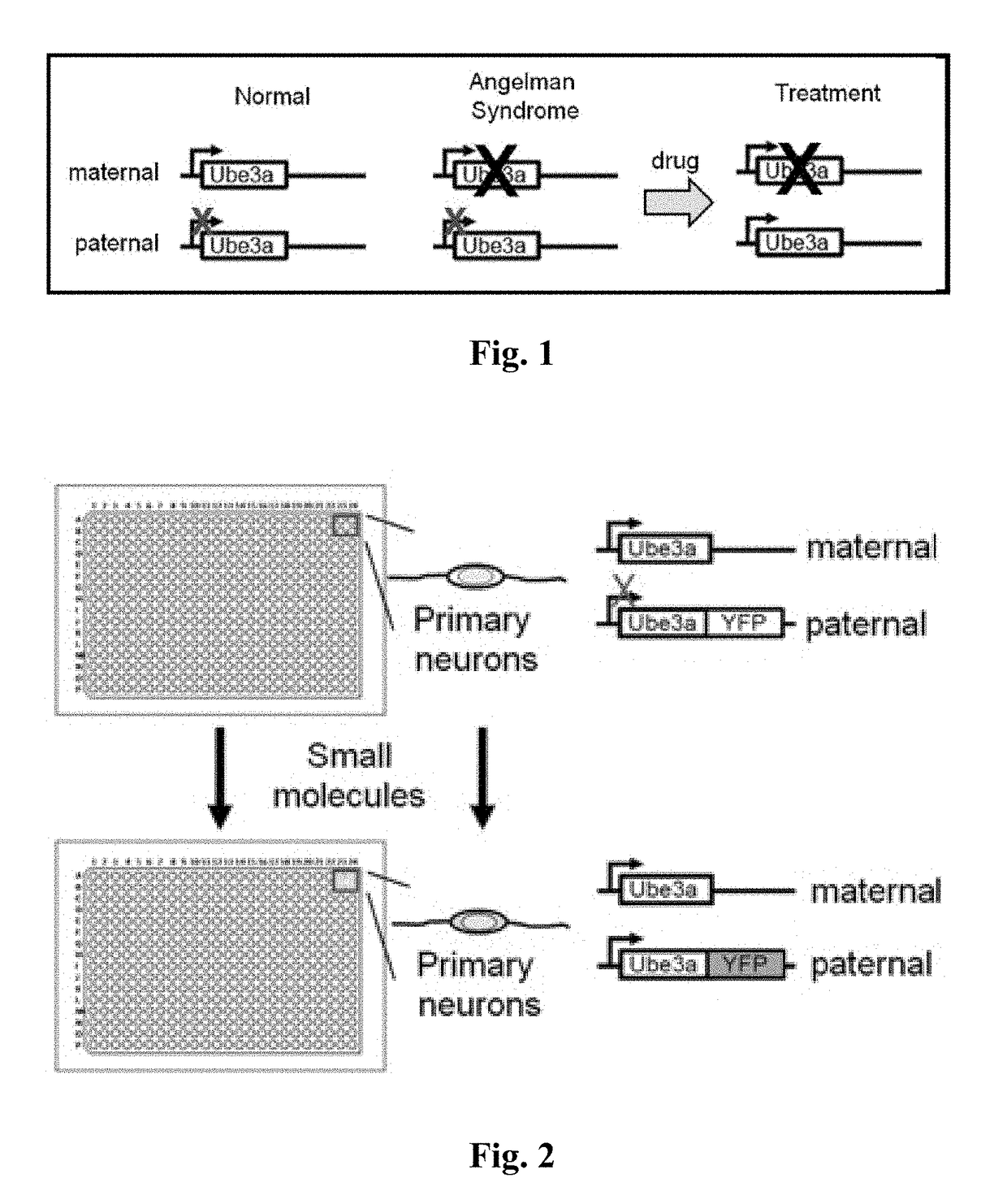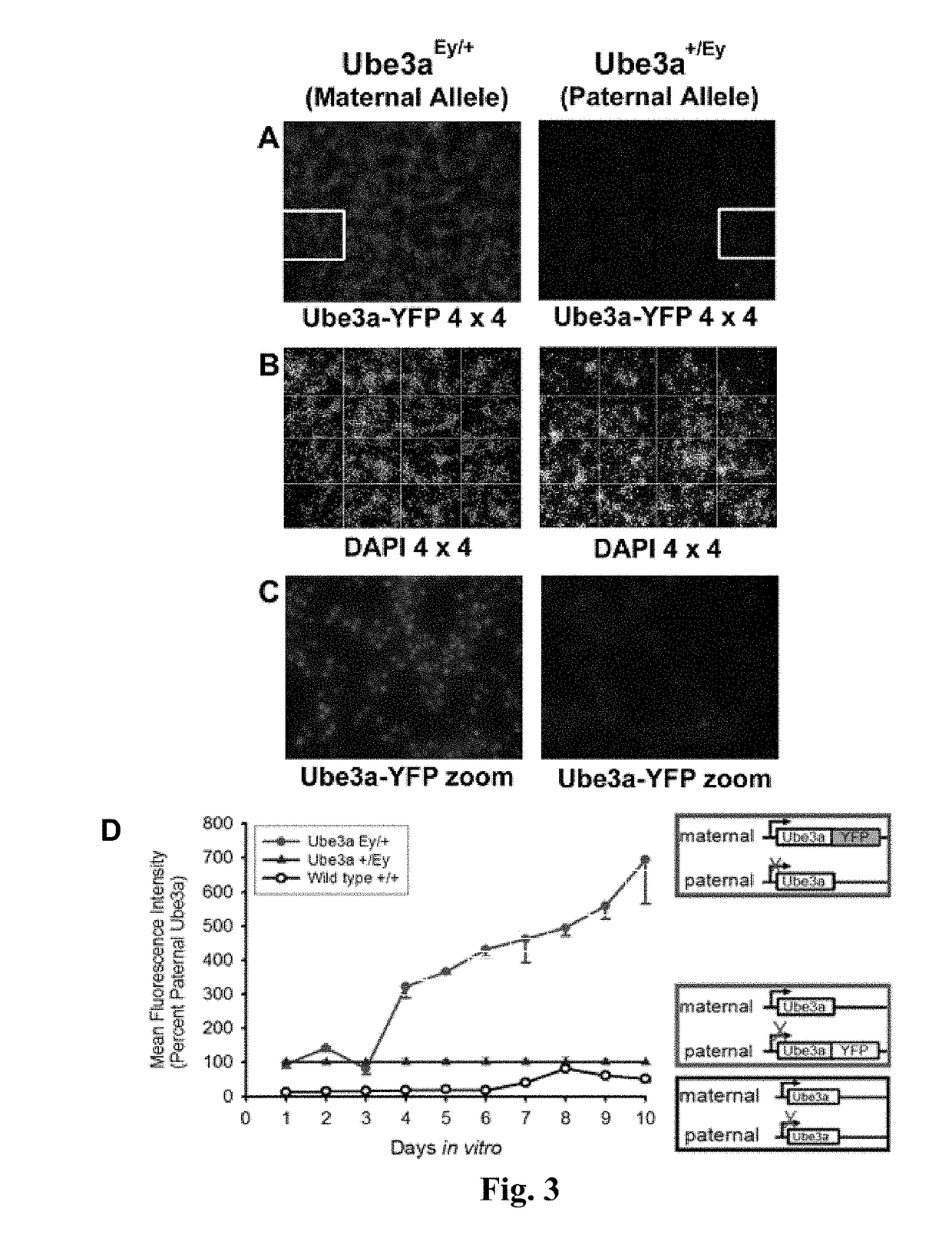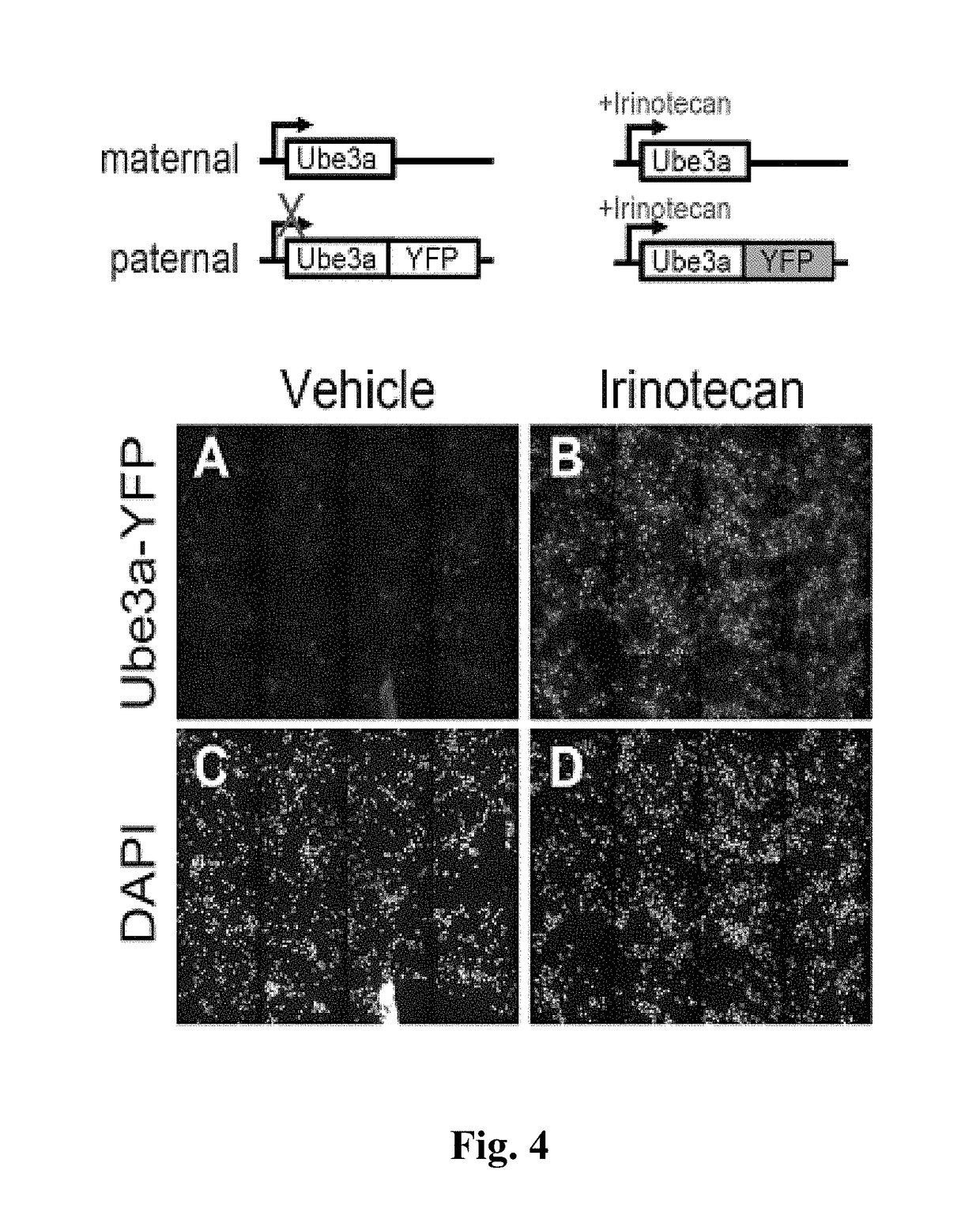Methods and compositions for unsilencing imprinted genes
a technology of imprinted genes and compositions, applied in the field of autism spectrum disorder, can solve the problems of inability to achieve the effect of amplification, inability to detect imprinted genes, and inability to achieve amplification,
- Summary
- Abstract
- Description
- Claims
- Application Information
AI Technical Summary
Benefits of technology
Problems solved by technology
Method used
Image
Examples
example 1
ecule Screening
[0087]Initial studies identified DNA topoisomerase inhibitors as the first class of small molecules that can unsilence an imprinted gene. This is both unprecedented and significant. Topoisomerase inhibitors, used to selectively kill rapidly dividing tumor cells, have never before been shown to unsilence imprinted genes. These findings are thus doubly important, as they identify a novel potential therapeutic use for an existing drug class, as well as a potential strategy that could be applied to treat Angelman syndrome, as well as other disorders involving imprinted genes (e.g., Prader-Willi syndrome, Beckwith-Wiedemann syndrome, Russell-Silver syndrome, and others) (Morison and Reeve, 1998; Butler, 2009). In some embodiments, the methods of the present invention allow for the identification of substances (e.g., small molecules) that optimally unsilence Ube3a in vitro and in vivo. Such a small molecule approach can target neurons throughout the central nervous system (...
example 2
ive RT-PCR and Western Blot Analysis to Confirm that Compounds Unsilence the Paternal Ube3a-YFP Allele
[0097]The fluorescence imaging assay of Ube3a-YFP described above is an ideal screening platform to identify active small molecules that unsilence Ube3a; however, it is important to use an orthogonal assay to verify that these topoisomerase inhibitors increase endogenous Ube3a mRNA and protein in neurons. To this end, RT-PCR analyses determined that treatment of neurons with irinotecan significantly increased the level of paternal Ube3a-YFP mRNA, indicating irinotecan increases Ube3a-YFP mRNA expression by unsilencing the paternal allele (FIG. 5, Panel A). Similarly, immunoblot analyses determined that irinotecan treatment of neuronal cultures significantly increases paternal Ube3a-YFP protein levels (FIG. 5, Panel B). Finally, to confirm that endogenous Ube3a is upregulated by the topoisomerase inhibitor, immunoblot analyses also determined that irinotecan treatment of cortical neu...
example 3
tudies
[0102]To determine if topoisomerase inhibitor compounds are also active in vivo, preclinical testing of compounds was performed using mice expressing paternal Ube3a-YFP. For these studies, Ube3a-YFP mice received topotecan or irinotecan by intracerebroventricular (ICV) or intrathecal (IT) delivery, respectively, and detection of paternal Ube3a-YFP in spinal cord or brain was done using immunofluorescence detection. These in vivo studies determined that IT treatments of mice with irinotecan increased paternal Ube3a-YFP protein in the spinal cord of mice (FIG. 8) and ICV infusions of topotecan increased paternal Ube3a-YFP protein levels throughout the brain (FIG. 9). For dose-response studies, mice receive increasing concentrations of irinotecan or topotecan.
[0103]Methodology Details
[0104]Immunohistochemistry, quantitative PCR, and Western blotting methods are used to determine if candidate hit molecules upregulate paternal Ube3a-YFP after in vivo treatments. Comparisons of Ube3...
PUM
 Login to View More
Login to View More Abstract
Description
Claims
Application Information
 Login to View More
Login to View More - R&D
- Intellectual Property
- Life Sciences
- Materials
- Tech Scout
- Unparalleled Data Quality
- Higher Quality Content
- 60% Fewer Hallucinations
Browse by: Latest US Patents, China's latest patents, Technical Efficacy Thesaurus, Application Domain, Technology Topic, Popular Technical Reports.
© 2025 PatSnap. All rights reserved.Legal|Privacy policy|Modern Slavery Act Transparency Statement|Sitemap|About US| Contact US: help@patsnap.com



